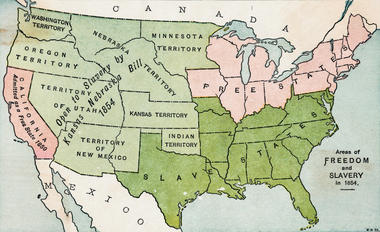
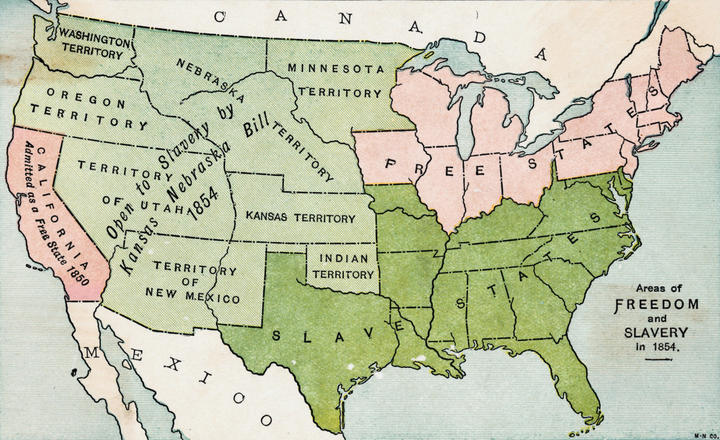
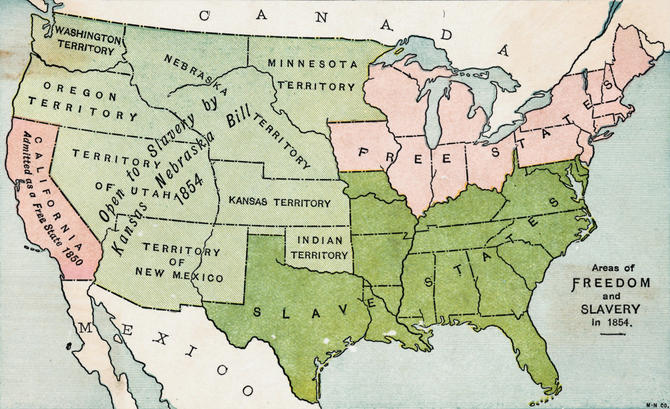
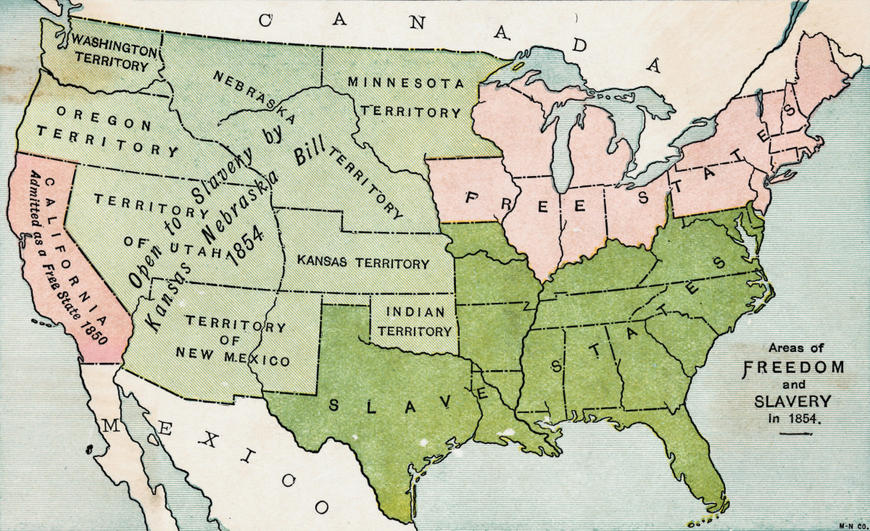
Today, everyone talks about the huge contribution of slaves to the US economy, but no one wants to remember what it was worth to them: they lived in terrible conditions; they were tortured, punished, humiliated, and sold as a commodity, separated from relatives and loved ones. The stories of enslaved families in Missouri may differ from those who lived deeper in the south, but slavery remained slavery, in spite of its location. Well, I believe that along with the economic side of the issue one should also consider social one, and for this aim, it is most expedient to refer to the origins - the letters of people, who directly experienced effects of slavery on themselves.
Well, slavery in Missouri influenced the definition of its economic and social life until it became a state. To confirm this statement, let us remember how slavery formed in Missouri. There is an opinion that the founder of Negro slavery in Missouri was Philippe Francois Renault, who brought 500 blacks from Santo Domingo to work on mines in St. Louis. It happened in 1720.1 The influx of slave owners in Missouri prompted the rapid development of the cotton industry in the United States. However, despite the fact that the slave trade grew and became a kind of successful business in Missouri, the price of slaves reached a peak there just before the Civil War. Below you can find some statistical facts of that time. In 1860, the total population of Missouri was 1 182 012 people; the total amount of slaves was 114 931 people, which meant 9, 8% of the total population were slaves.2 During 10 years, from 1950 to 1960, the amount of slaves grew on 27 509 people (about 33%).3 1n 1860 the State Auditor's report estimated the cost of slaves in Missouri at $44 181 912.4 This way slavery in Missouri could be defined as a way of making money in the economic sphere of life, but it was not limited to that definition. Another important aspect was its social side.
In spite of such terrifying statistics, it is worth paying attention to some features of slavery in Missouri. The number of slaves that the whites possessed was determined by economic and positional conditions. Missouri was mainly an agricultural state, and that is why most of the slaves were involved in agriculture. Thus, in general, most of the slave keepers owned only one or two blacks as their slaves, and such people as Jabis F. Smith of Jackson County or John Ragland of Cooper County, who owned 165 and 70 blacks, were exceptions of the rule.5 But slaves were used not only as farmers; many of them became skilled workers. They served as blacksmiths, valets, carpenters, stevedores, bricklayers, nurses, horticulturists, butlers, house cleaners and even cooks. An interesting feature was that, in fact, the slave and his family and the slave-owner and his family were, a kind of team, sharing duties and a range of work in the field. Unfortunately, their cooperation failed at the stage of profit sharing. The most horrifying thing about this entire situation was that a black man constantly reminded that he was property, not a human being. In 1804, there were adopted so-called slave codes, to keep the blacks “in their place”.6 According to some positions of these laws, blacks, who violated the prohibitions, were severely punished. For example, slaves who resisted their masters received 39 stripes.7 The most common forms of punishment were whipping, hanging and burning to death. One of the harshest laws adopted in 1847. According to it, slaves were forbidden to receive education, and those who were convicted in the teachings of writing or reading Negros threatened a fine of $ 500 and imprisonment for six months.8 Such state of affairs could not suit people for a long time and, soon, more and more disgruntled opponents of slavery appeared. Those people advocated the abolition of slavery both locally and nationally. These people were called abolitionists, unfortunately, they were disapproved. As were told earlier, Missouri was a slaveholding state and that is why most of the citizens hated those people, who advocated a way of life which did not include servitude for blacks and threatened to destroy the institution that provided slave-owners with cheap labor. However, they could not do anything to change the situation until the beginning of the Civil War. At the beginning of the war, there was still uncertainty; most citizens advocated the preservation of slavery and that is why the Union army tried to play a neutral role in this question. The most popular way to change their lives among slaves who could no longer put up with such an attitude towards themselves was the escape. It is known, that by the end of 1860, 24 000 slaves escaped to Canada in an attempt to gain precious and desirable freedom.9
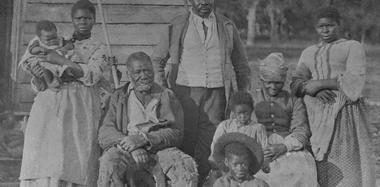
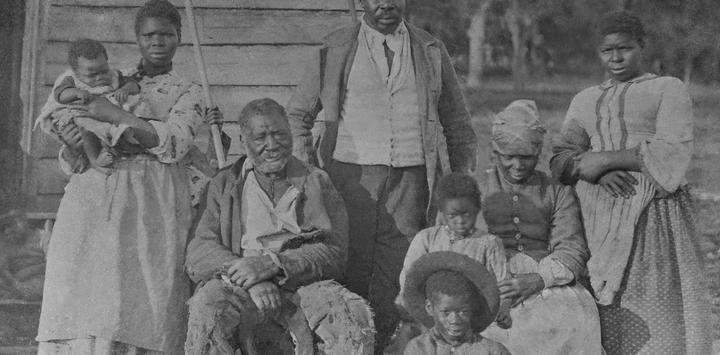
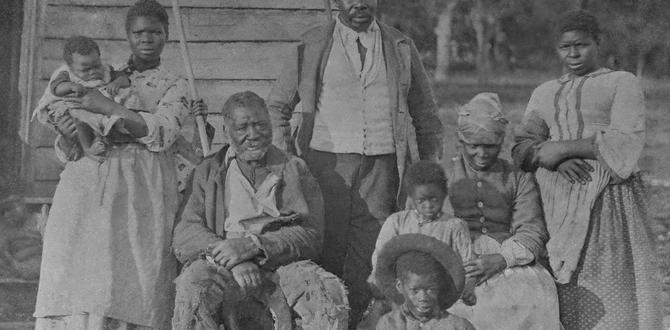
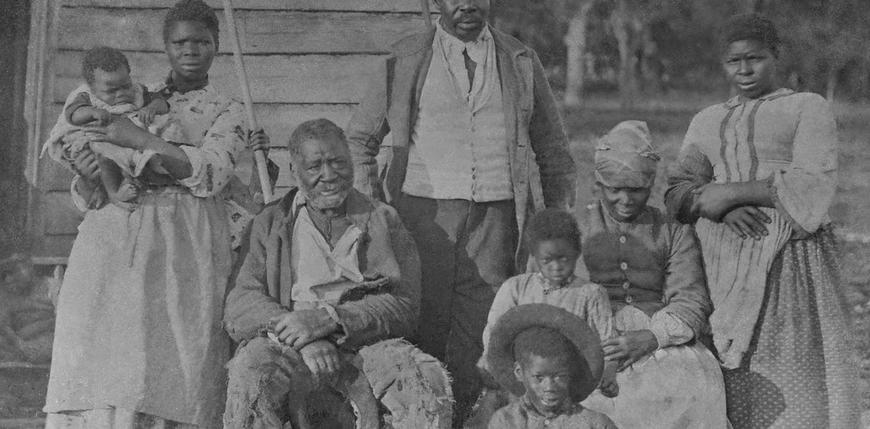
Attached file: Enslaved Families in Missouri in the 1860s .docx
Click download to get access to a full version of the paper
From the information above it is possible to draw certain conclusions about the economic role of slaves, and now I want to consider the question of their social integrity. In addition to the more widely known information, there remained data, which can be gleaned from the origin sources - letters of enslaved people. From these letters, one can find out the details of the life of these unfortunate people, their hopes and dreams. I think that reading the stories of those people can help in understanding the traditions and rules of that time, and features of attitude to slavery. This way, in these letters one can find, in truth, valuable information about the social side of the life of slaves, and answer for some important questions, such as: How did the hosts treat their slaves? In what conditions did the slaves live? What was the difference between the conditions of life of Missouri’s slaves and the other South’s slaves?
The first story I want to discuss is the story of the former slave, Betty Abernathy. According to Betty Abernathy’s interview, who was enslaved in the 1860s, one can learn horrible details of living as a slave.10 She lived in a Perry County and described that place as “poor little cabins”, among which there was the one she lived. It was a room, “built of logs” with a “puncheon floor”.11 Betty also noticed that although there were many slaves, there were no school and church for them, and they went “barefooted” during their slavery. Soon a new slave-owner Tom Johnson came to buy Betty and her family; he took them to Little Rock in Arkansas. The conditions of life had become even worse and once, Betty’s two brothers came home and told their mother they were going to escape. When Tom Johnson learned about escape he came to the family and tortured Betty’s mother to force her saying where her children were hiding. After that case, Betty and her mother escaped too.12
Another story that I would like to consider is in the book “Missouri Slave Narratives”, written as a federal writers' project, and has a number 240165. This is a story about a woman named Casey Harriet.13 She tells about her hard life in slavery. This woman was born in slavery and lived there for about 65 years, which is a big part of life. Childhood and youth of this woman have been enslaved. She knew that she had parents: a mother named Katherine and a father named George. Also, Cassie knew that her brothers and sisters were also sold into slavery when she was just born. Her mistress was very strict and therefore very often she punished her slaves very much. Cassie recalls the incident as she once grazed cows and one of the kind people gave her an egg when Cassie returned home then the mistress took the "booty" and smashed it. Cassie recalls that during the meal Cassie and the other slaves looked like a pig as they ate from one large dish and sat in a circle. This very clearly demonstrates how they treated slaves, they were considered for the foolish method because even the food that they were given was food for insects. Also, the woman recalls that even during the cold winter the slaves had no shoes, they walked barefoot. The hell for Cassie ended only when her older sister fetched her out of slavery and taught her the alphabet and the letter. This story, like many others, demonstrates the life of slaves, or rather not life but struggle for survival in the wild conditions in which they placed outside the will.
One more story, I would like to share with you, is the story of the oldest woman ex-slave encountered in Missouri, Hanna Allen.14 When she was a slave she belonged to the family named Bolinger. That family was pious and their attitude to slaves differed from others. Hanna recollected that her masters did not want to tell her that slavery was abolished when that happened. The woman said that slavery taught her a lot. She said that in spite of the slavery was declared illegal she did not want to leave and stayed with Bolingers. Although she was paid nothing, she got clothes, went to church and ate at the same table with “white folks”, and that suited her completely.15 Soon she moved to Fredericktown and began working for money. There she got married twice, but she had not native children, however, with her first husband they adopted a boy, his sister’s child. At the end of her interview, Hanna expressed her attitude to the conviction of the modern generation that they are better than the victims of slavery. She said that she learned enough as a slave and there is still one sense in which her generation is better than the young one: they “do not know how to do nothing”.16
The story of Lula Chambers can also tell us some details about life as a slave. When Lula was interviewed she was not sure about her age, and sad that she was over 90 years old and the place of her birth was Kentucky.17 In spite of the fact that her master was not a very cruel man, Lula remembered the times of her slavery willingly, with pain and bitterness. But the main reason for this was not even the fact of her slavery and the tortures she had to pass through as a slave. The main reason was her loneliness, Lula was deprived of parental care and affection, since her mother was sold to another owner when she was still quite a baby, what about her father, she did not even know him. Luna`s master was a man by name Dave Lillard. He owned more than a hundred slaves and took care of all of them, but the reason for that was not his kindness, but his enterprise.18 There was a very developed market of the slave trade in Arkansas, and Lula’s owner had been involved in this business, keeping his slaves in good conditions and punishing them only by the invincibility. Lula Chambers sad, that after the slavery, she had never learned to write or read, but her visits to the church became her sense of life. However, the woman could not forgive her abusers, but who dares to blame her for it?
Other examples of severe slavery fate can be found in the book Redemption Songs: Suing for Freedom before Dred Scott by Lea VanderVelde. Despite the fact that the scholar considered 12 cases of slaves claiming for freedom, perhaps, the most memorable one is the case of Dred Scott, so I think it needed to be paid more attention. Dred Scott was born around 1800 in Virginia and moved with his master, Peter Blow, to Missouri in 1830.19 Two years later his master died and he was bought by another master, Dr. John Emerson. During the service at Emerson, Scott met his wife, a slave, belonged to another master, and since that time Scott’s story of fighting for freedom began. It was a touching story, but unfortunately, it had not a happy end, Scott sued for half of his life, but never gained the desired freedom. After the decision of the Supreme Court, the sons of his former master bought him and his wife and gave them long-awaited freedom, but soon Scott died.20 When one is reading this story of a man’s fierce stubborn struggle for his freedom and freedom for his family, he experiences mixed feelings. I think the most obvious of them is sadness for his failure, admiration for the persistence and strength of the slave’s spirit, and resentment and shame for the judges who accepted a decision to cancel the order that Scott and his family were free, accepted by the Missouri Supreme Court.
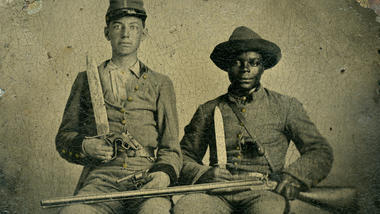
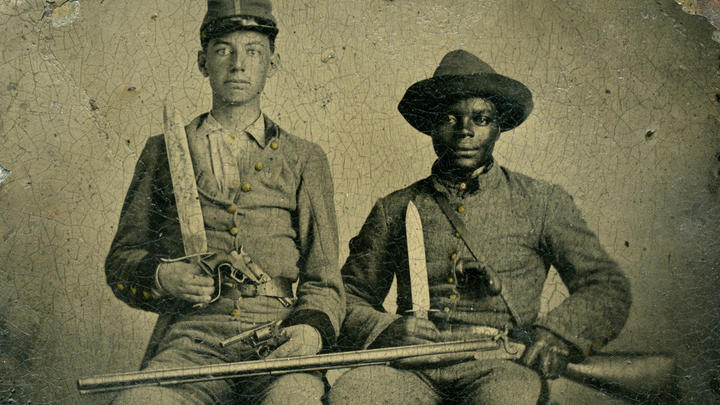
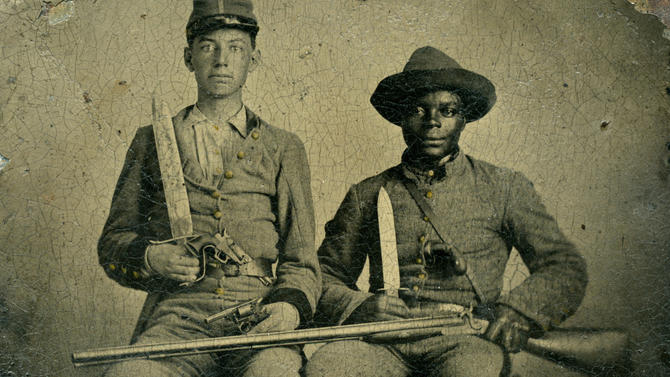
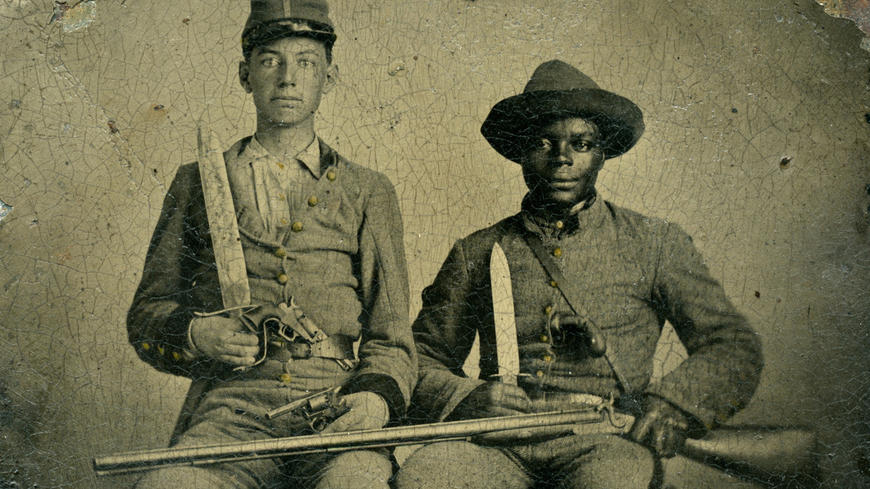
Despite all the equally moderate reforms in the South and the North, the relation to the black half of the population was more severe in the North. Slavery provides a limitation on everything. It was exactly what happened with the black slaves. It was forbidden to be next to the white ones, just stand side by side or be in the same room. Based on the letters of eyewitnesses, it becomes clear that this is not an invention and the underlying ill-treatment was present. It was believed that in the South, the attitude towards slaves is more lenient, there is an opinion that they were even allowed to live with their masters. Black slaves were allowed to join the army only by 1865.21 In a significant number they were used there as cooks, orderlies, auxiliary workers, and servants. In the troops of the northerners, the Blacks began to appear after the proclamation of liberation was announced. By the end of the war, the federal army had about 10% of black soldiers.22 Unlike Europe, the American north in the mid-nineteenth century was fully prepared to put up with the institution of slavery and went to its abolition, only to undermine the power of the south.
Probably if one put a question to a modern man about what caused the Civil War that erupted in 1861 in the United States-he almost certainly will answer: it started because of slavery.23 But it will not be a delusion because the war does not have many reasons, and slavery and power were the leading causes of the wars of that time. In the Southern States, there was slavery, and in the north, it was not. The Northerners wanted to free the black slaves, the southerners opposed it. The economy of the South grew at an unusually high pace. Slave-owning farms were more efficient than farms based on free labor. Black slaves worked better and brought more profit than free workers, and this applied not only to agriculture but also to industrial production. It was explained by the fact that the slave owners stimulated their employees not so much with punishments as with incentives, and the quality of life of slaves was on average higher than of free workers in the North.24
Even those for whom slavery was unacceptable for religious and moral reasons, for the most part, believed that it should gradually wither away and that it should only be promoted by persuasion. If slavery also figured among the reasons that led to the war, it is by no means in itself: The South sought to extend this institution to the newly annexed territories of the Wild West. If it is successful, the slave states would receive a numerical superiority in the Congress, that is, the question, in fact, boiled down to power: the southern or northern lobby would rule in the United States. Politicians were ready to fight for power, but not for the liberation of slaves. The American society of the 1860s remained, with very few exceptions, racist.25 North in this respect, perhaps, even outstripped the South. In the end, slavery in the North abolished not for religious or moral reasons, but for economic reasons: there simply did not develop (mainly because of the climate) such labor-intensive branches of agriculture as rice, cotton, tobacco. The use of slave labor gave the greatest effect, and the way this abolition carried out, says a lot about the northern society, about the degree of its infection with xenophobia. However, one should not think that the liberated blacks flowed joyfully into the crowd of white townspeople. There was no one to join in; in the overwhelming majority of cases, by the time of the X hour, almost all the slaves have been already sold to those states where slavery remained. The North did not liberate its Blacks; it drove them to the South.26
The racist views of northern voters were actively exploited by Republican opponents. They represented the case as if the victory of this party and Lincoln would lead to the immediate emancipation of the slaves, and thus the streets of northern cities would be flooded with crowds of “dirty” and “wild” Negroes. This legend firmly imprinted in the minds of voters and left an indelible mark there, especially since the Republican Civil War broke out and slavery really came to the end. However, it was canceled as necessary, under the pressure of specific circumstances, and not because Lincoln and his party colleagues originally wanted it. When the commander of the northern forces in Missouri, General John C. Fremont, issued an order on August 30, 1861, of the people in the state who were in favor of secession were subject to confiscation, and all state slaves were free, Lincoln abolished it.27 In Missouri, where slaveholding farms were concentrated mainly in one district, the question of secession split the societies about. In fact, there began its own small civil war, in which both the North and the South, of course, were interfered, as the state was strategically important for both sides.
Civil war, like many other wars, took a large number of lives. It is impossible to determine what losses the North and South suffered and how many dead and wounded victims were. It is obvious that slavery in Missouri influenced its economic and social life until it became a state. In order to consider social aspect of the slave’s life of Missouri, there was provided the original information, taken from the letters of enslaved people, from those who have experienced the hardships of slavery on themselves, in order to share the details of their lives and all the horrors that they had to endure. It was a horrible time, full of suffering and unjust harassment, and still, there are some issues remained unresolved like the absolute equality of the black population.